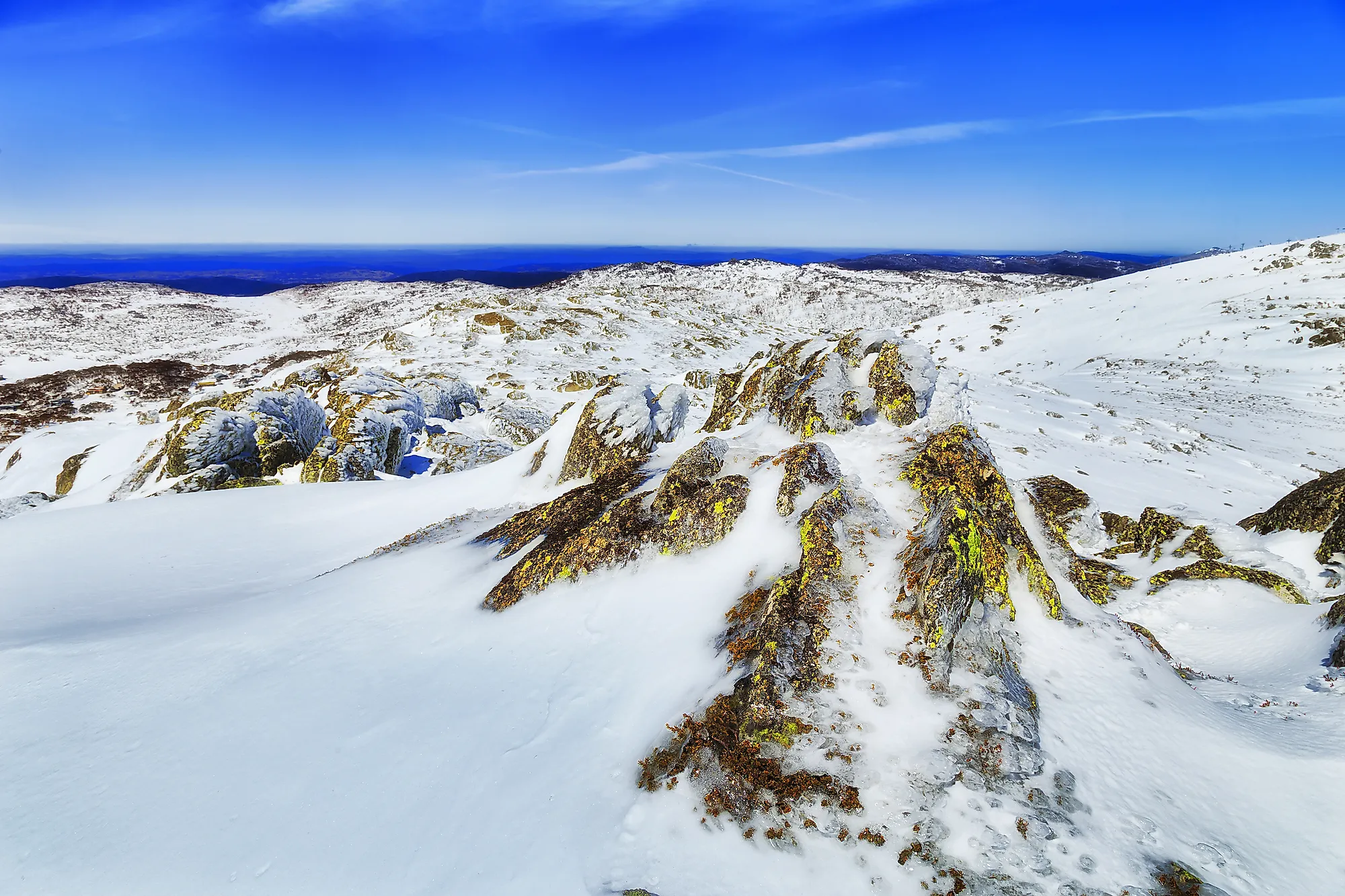
Snowy Mountains, Australia
The Snowy Mountains is a biogeographic region and mountain range in southern New South Wales, containing mainland Australia’s tallest peak. It is the highest mountain range in the Australian mainland and a part of the Great Dividing Range. The Snowies occupy the Australian Alps’ northeastern half and contain the country’s five tallest peaks, including Mount Kosciuszko, the highest point in mainland Australia at 2,228 meters. Several rivers rise from the slopes of the Snowy Mountains, including the Murray, Snowy, Tumut, and Murrumbidgee rivers. The range which remains covered by snow for 3-6 months a year, is a popular winter sports destination and hosts all four of NSW’s snow resorts.
Location
The Snowy Mountains is part of the Australian Alps, located in southeastern Australia, straddling the Australian Capital Territory, Victoria, and New South Wales. The Snowies account for the range’s northeastern half, while the Victorian Alps occupy the rest. It extends within the Australian Capital Territory and New South Wales and includes the Kosciuszko National Park. Mount Kosciuszko, the Australian mainland’s highest peak, occupies the region’s Main Range and is located within the Kosciuszko National Park. The Snowy Mountain range is located approximately 400 kilometers southwest of Sydney and 215 kilometers south of Canberra.
Geography
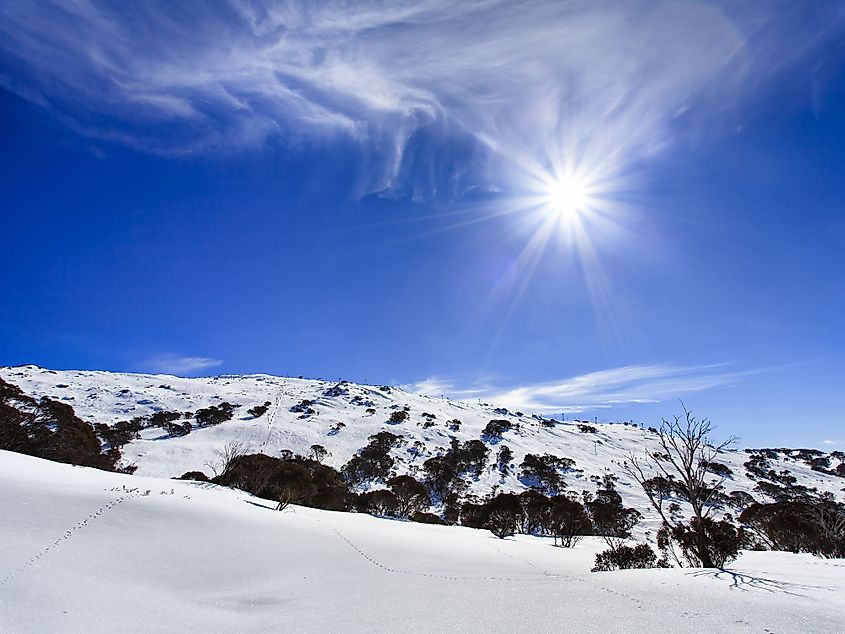
The Australian Alps is the section of the Great Dividing Range running roughly parallel to Australia’s southeastern coast. The Snowies occupy the range’s northeastern section in the Australian Capital Territory and southeastern New South Wales and cover about 7,130 square kilometers. The region is the only area in mainland Australia that experiences an alpine climate. However, only mountain peaks receive substantial snowfall during winter.
The Snowy Mountains is a part of the Australian Alps which began forming around 860 million years ago when the sea still covered southeastern Australia. The Australian Alps, unlike the Himalayas or Rockies, did not form from continental plate collisions. Rather, the Australian Alps were formed by marine sediments, which created high plateaus and rolling hills. When the Gondwana supercontinent began to break up over 130 million years ago, the magma movement lifted the plateaus hundreds of meters up. Over the last 100 million years, the ancient rocks were uplifted and folded several times before the mountains could reach their current height. The Snowy Mountains is the Australian mainland’s highest range and the only area in the country to be covered with glaciers. The range contains the mainland’s tallest peaks, all rising above 2,130 meters. The Snowies’ tallest mountains are Mount Kosciuszko (2,228 m), Mount Townsend (2,209 m), Mount Twynam (2,196 m), Rams Head (2,190 m), Etheridge Ridge’s unnamed peak (2,180 m), and Rams Head North (2,177 m).
Glacial Lakes
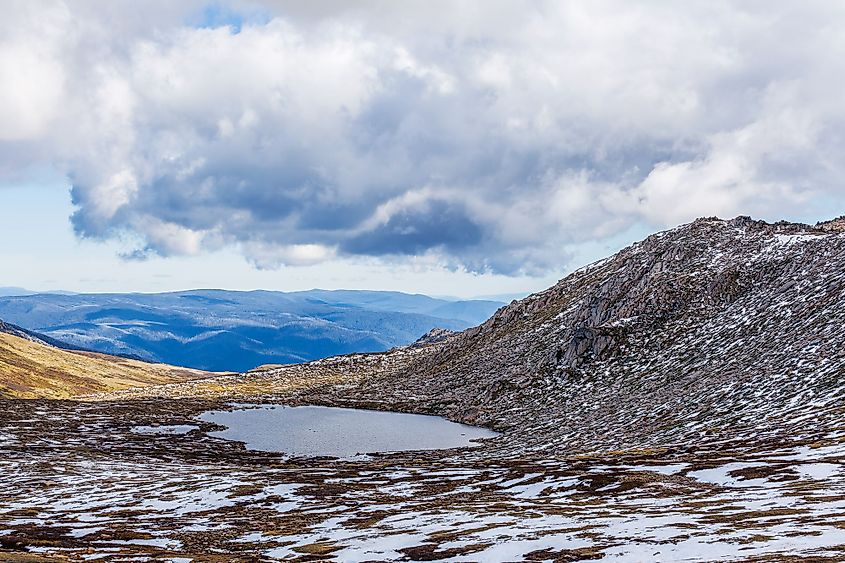
All the four glacial lakes on mainland Australia are located in a section of the Snowy Mountains known as the Main Range. This section contains most of the range’s highest peaks, including Mount Kosciuszko, and it is the only place in the mainland with glacial cover. The four glacial lakes are Blue Lake, Headley Tarn, Lake Albina, and Lake Cootapatamba. The Blue Lake is the largest cirque lake in mainland Australia, covering only 0.16 sq.km and located at an elevation of 1,890 meters in the Australian Alps National Parks and Reserves. Lake Cootapatamba is the Australian mainland’s highest lake.
The last Pleistocene glaciation on mainland Australia was restricted to the southeastern highlands, including the Snowy Mountain region. At least the two distinct glaciations that occurred during the last glaciation period are the Early Kosciuszko and Late Kosciuszko glaciation. The Early Kosciuszko glaciation was more extensive and occurred 59,300 years ago. It consisted of only the Snow River advance. The last glaciation occurred 32,000-20,000 years ago and comprised Headley Tarn, Blue Lake, and Mount Twynam Advances. The two glaciation periods correspond to periglacial activity in the region.
Mountain Regions
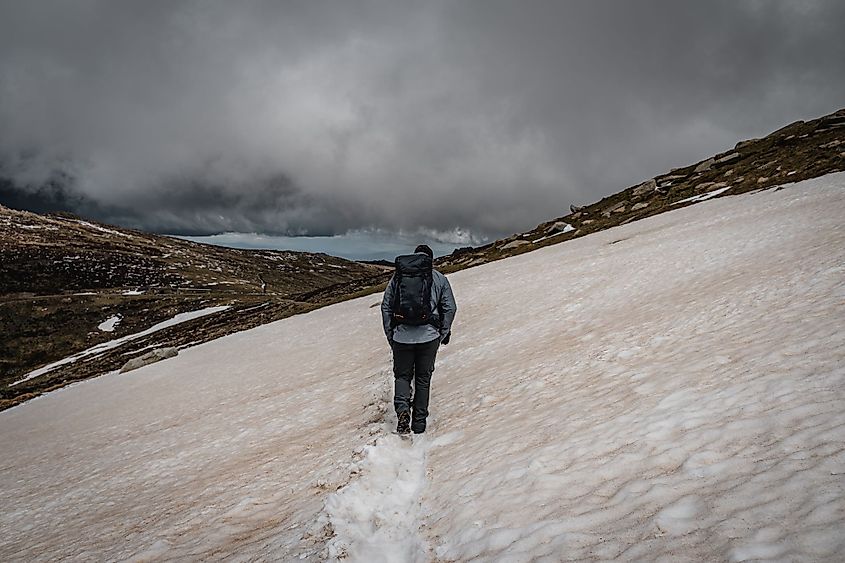
The Snowy Mountain region comprises the Main Range and the Ramshead Range. The Main Range is one of Australia’s most popular areas because it hosts most of the mainland’s tallest peaks. This section of the Great Dividing Range is located between Dicky Cooper Bogong and the Ramshead Range in New South Wales. Other peaks include Caruthers, Mount Tate, Mount Anderson, and Mount Townsend.
The Ramshead Range is the section of the Snowies that extends from the Monaro region (NSW) to the Alpine Region (Victoria) across the Black-Allen Line. Although the number of peaks within this range is debatable, it is generally accepted that the North Ramshead, South Ramshead, and Rams Head are all its peaks. Mount Twynam is the range’s highest point at 2,178 meters. Snow covers the range from June to October, making it a suitable skiing destination.
Flora and Fauna
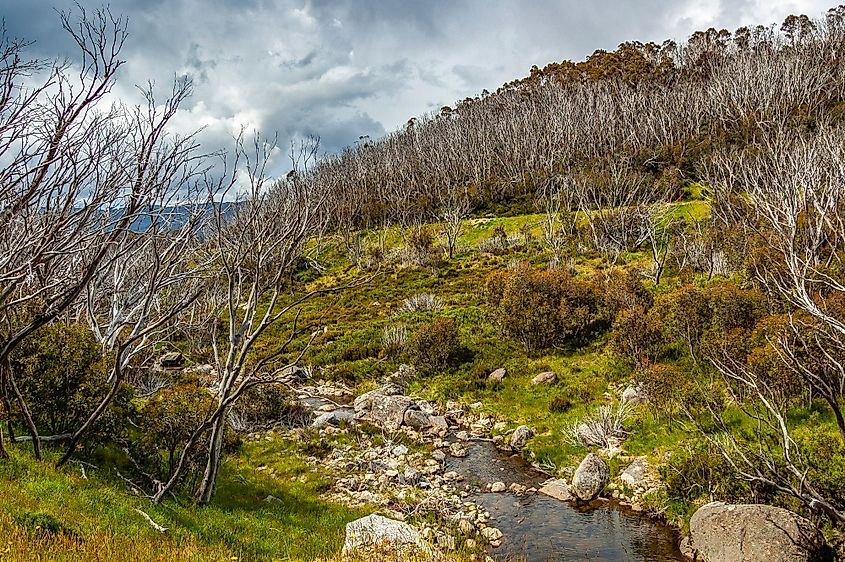
The different climatic regions in the Snowy Mountains support various ecosystems, making it a suitable home for threatened or rare species. The alpine region covers a small area and is Australia’s most fragile ecoregion. It contains patches of bogs, feldmarks, heaths, and ferns. The feldmark ecotope covers less than 0.5 square kilometers despite being endemic to the region. Alpine woodland, covering most parts of the high country, includes mainly snow gums and mountain plum-pine. The wet sclerophyll and montane forests occurring across the mountains contain mountain gum and alpine ashes.
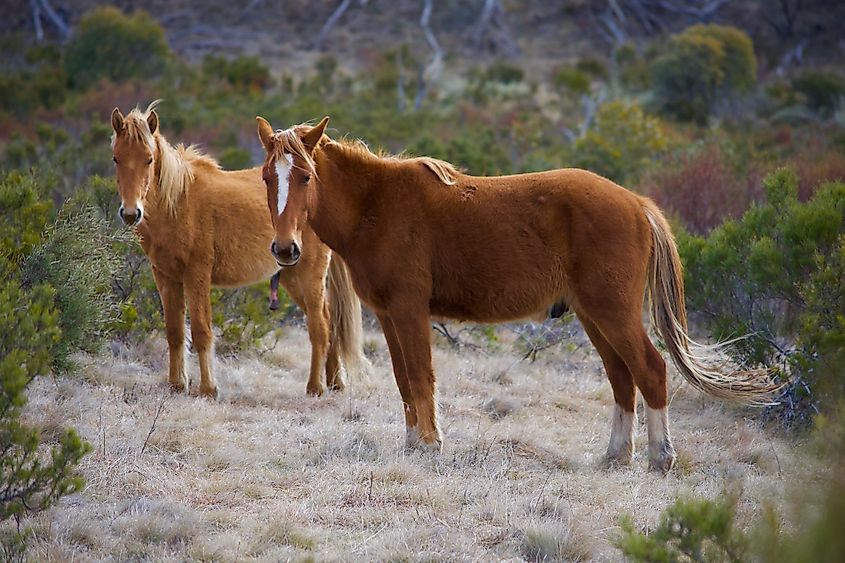
The Kosciuszko National Park, which hosts most of the Snowies, contains some of Australia’s most threatened animal species, such as the corroboree frog that is native to Southern Tableland. The park’s high country hosts the endangered dusky antechinus and mountain pygmy possum. The Snowy Mountains are also home to a large number of wild horses, including 1,700 wild horses in the Kosciuszko National Park.
Brief History
The Snowy Mountains region has been occupied for about 20,000 years, mainly by the Aboriginal Australians, who collectively feasted on Bogongo moth during summer. The Europeans first explored the area in 1835. Five years later, the Polish explorer Sir Pawel Edmund Strzelecki reached the summit of Mount Kosciuszko and named it in honor of General Tadeusz Kosciuszko because it resembled the artificial Kosciuszko Mound in Poland. The High Country herders grazed on the range and built the mountain huts that exist in the park.
Kiandra, now a ghost town, was an active gold mining town in the 19th century, with over 4,000 people. The gold discovery marked the beginning of recreational skiing in the mountains. Skiing continued even after the mines were closed, with the country’s first T-Bar built in the area in 1957 (relocated to Selwyn Snowfield in 1978). Several ski resorts and villages have since been constructed in the Snowy Mountains.











